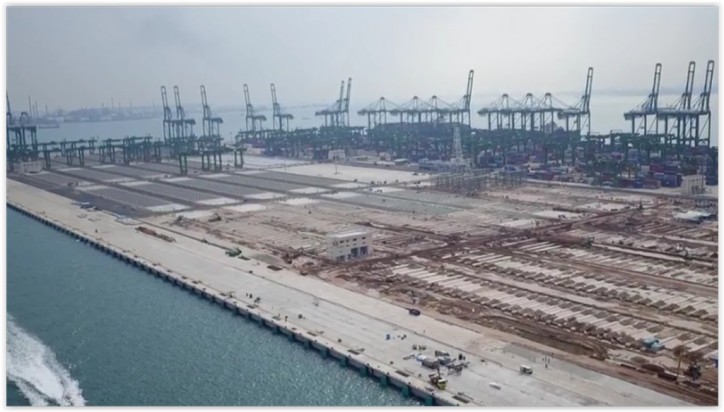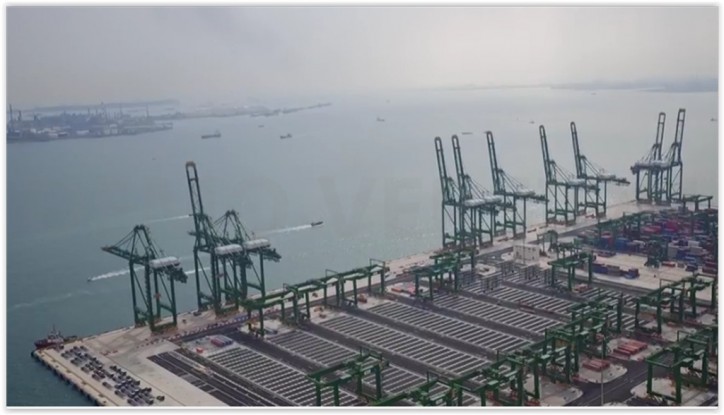1) To construct PPT Phases 3&4, some 198ha of land (equivalent to 280 football fields) was reclaimed off the Pasir Panjang shore.
2) PPT Phases 3&4 add 15 deepwater container berths, which when fully developed, would have an annual handling capacity of about 15 million twenty foot equivalent units (TEUs)
3) This will increase the overall container handling capacity to 50 million TEUs in Singapore. The additional container handling capacity will help to ensure that Singapore retains its status as a leading container transshipment hub.
4) Instead of fully using sea sand, nearly half of the reclamation fill used were alternative materials.

5) These alternative materials included marine clay from deepening of fairway and basins as well as excavated earth from land construction such as road, MRT and building projects. This innovative engineering process is much more sustainable than traditional reclamation method.
6) An innovative way of making the caissons-large reinforced concrete structures that form the seal wall and wharf structure-involved pre-casting them using specialised machine and transporting the caisson into docking position using a floating dock. As the caissons were of standard sizes and fabricated in a factory-like environment at site, productivity and the quality of caissons were increased.
7) For PPT Phases 3&4, a total of 150 caissons were constructed. Each caisson measures 21m to 32m, and weighs between 8,800 tons to 12,000 tons, depending on the height. The caissons used in the PPT Phases 3&4 development are among the largest in the world.

8) In reclaiming the land for PPT Phases 3&4 development, MPA used the Reduce, Reuse & Recycle construction approach. This has reduced the reliance on sea sand reclamation and the need for more disposal grounds for waste dredged and excavated materials, leading to substantial cost saving of $470 million. More importantly, a more sustainable development is achieved.
9) To preserve Singapore’s marine biodiversity, live corals at Labrador Nature Reserve affected by the land reclamation process were relocated with the involvement of NGOs. The survival rate of the relocated coral is 80% which is considered to be very good.
10) An environmental monitoring and management plan was put in place during the reclamation works which allowed the reclamation activities to proceed in an efficient manner, whilst ensuring protection of the environment and stakeholders.